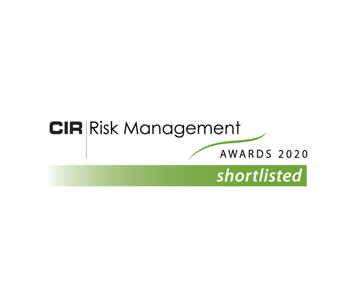Mapping the Future: How Location Intelligence is Redefining Corporate Security"
Mapping the Future: How Location Intelligence is Redefining Corporate Security"
In light of increasing and varied threats, from climate risks to civil unrest and pandemics, companies are rethinking their resilience and risk management approach.
From its inception, the HawkSight SRM platform integrated a Geographic Information System (GIS) to enable effective risk communication with decision-makers. In this enlightening article, Carl Walter, Esri's Director of Homeland Security Solutions, discusses the increasing diversification of the threat landscape and how companies leverage GIS for real-time risk visualisation.
This re-evaluation has increased the emphasis on location intelligence to strengthen corporate resilience. With the help of Geographic Information System (GIS), businesses can view real-time risks and vulnerabilities concerning their assets and personnel.
Historically, corporate security was physically oriented, with measures like locks and CCTV networks. Today, the scope has broadened to address a diverse "threat landscape," drawing on an ever-increasing publicly available data source. Now, with globalisation, companies face risks across vast geographies, and regulatory bodies are pressing them to enhance security. Large firms are adopting centralised security operations centres that employ GIS to monitor global activities in real time. Such technology has been pivotal for event management and in forecasting weather-related risks. Beyond historical measures, the future of corporate security is diving deep into cutting-edge technologies, such as geomagnetic positioning and machine learning. These tools offer unprecedented accuracy in tracking and anomaly detection. Even as technology evolves, the primary aim remains to use the best data to understand threats and ensure business continuity.
Key takeaways:
- Rising Threat Diversity: Companies are confronting diverse threats, from pandemics to geopolitical unrest, pushing them to prioritise corporate security strategies.
- Location Intelligence: Using a Geographic Information System (GIS) allows businesses to visualise real-time threats, vulnerabilities, and assets, making it a pivotal tool for modern risk management.
- Evolution of Corporate Security: Historically focused on physical measures, contemporary corporate security addresses a dynamic "threat landscape" across various disciplines, from weather to geopolitical risks.
- Centralised Security Operations: Many large corporations are adopting centralised security operations centres, using GIS to monitor activities and threats globally in real-time.
- Future Technologies: Advanced tools like geomagnetic positioning, machine learning, and cloud-based innovations promise to redefine corporate security, offering more accurate tracking, anomaly detection, and collaborative security measures.
To read the full article, go to https://www.esri.com/about/newsroom/publications/wherenext/new-corporate-security-techniques/








